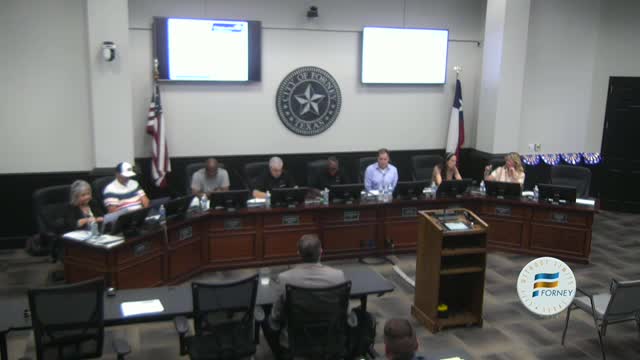Nick Bulash Discusses City Debt Overview and Facility Strategy at Council Workshop
July 21, 2025 | Forney, Kaufman County, Texas
Thanks to Scribe from Workplace AI , all articles about Texas are free for you to enjoy throughout 2025!

This article was created by AI using a video recording of the meeting. It summarizes the key points discussed, but for full details and context, please refer to the video of the full meeting. Link to Full Meeting
Gulush, a seasoned municipal advisor with nearly 25 years of experience, began by outlining the city's existing debt profile. He highlighted the city's strong credit ratings—AA from Standard and Poor's and AA2 from Moody's—indicating a robust financial standing just below the highest tier. The council learned that the city's debt is on a rapid decline, providing a promising outlook for future financial flexibility.
As the discussion progressed, Gulush explained the intricacies of the city's tax rate history, emphasizing the significant reduction from nearly 70 cents to about 41 cents over time. This decline, he noted, is largely due to the city's growing tax base and minimal new debt issuance. The council was reminded that the city's tax structure consists of two main components: the Maintenance and Operations (M&O) tax rate, which funds day-to-day operations, and the Interest and Sinking (I&S) tax rate, dedicated to debt service.
The workshop also touched on the legal framework governing debt issuance in Texas. Gulush clarified the differences between general obligation bonds, certificates of obligation, and tax notes, explaining how each type of debt is funded and the implications of public voting on these financial decisions. He pointed out that recent legislative changes have made it increasingly challenging for cities to navigate funding for critical infrastructure without public referendums, particularly for projects that do not fall under existing facilities.
As the meeting unfolded, council members were encouraged to consider the long-term facility strategy that would guide future decisions. Brian Wyatt, who has experience with similar cities, was set to lead the discussion on facility needs, ensuring that the council remained focused on their objectives.
The evening concluded with a sense of purpose, as council members prepared to define clear directions for staff regarding future meetings and potential projects. The discussions held during this workshop not only illuminated the city's financial health but also set the stage for strategic planning that could shape Forney's infrastructure for years to come.
Converted from Forney - City Council Workshop - Jul 21, 2025 meeting on July 21, 2025
Link to Full Meeting
Comments
View full meeting
This article is based on a recent meeting—watch the full video and explore the complete transcript for deeper insights into the discussion.
View full meeting
